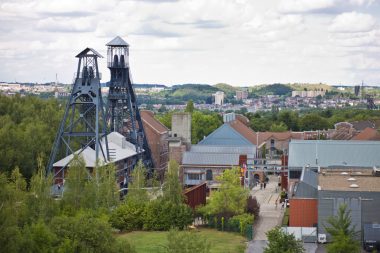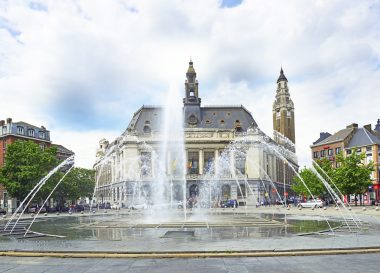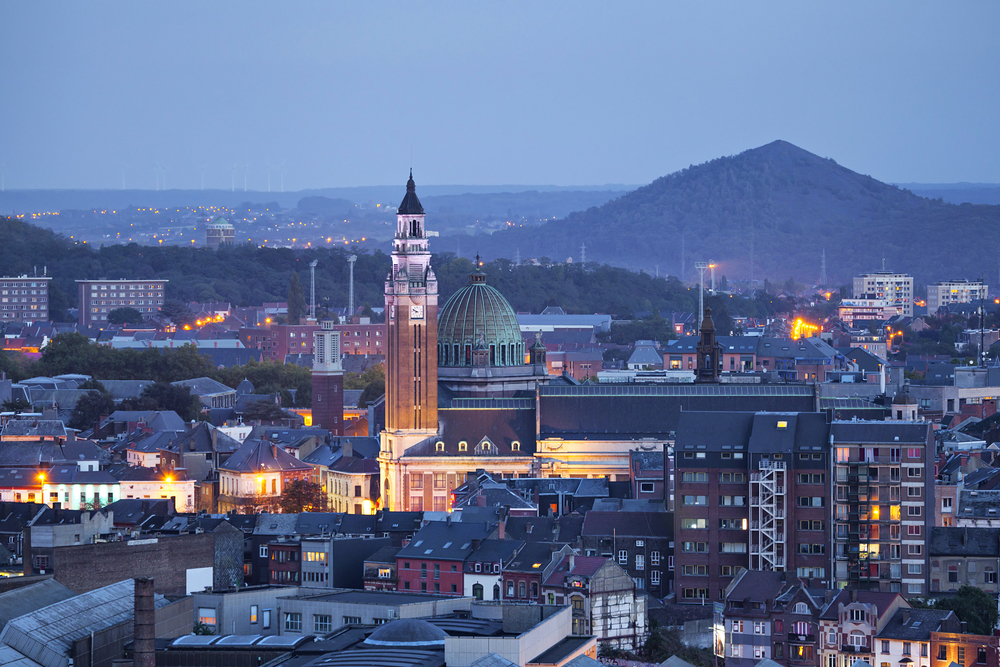Charleroi, affectionately called Carolo by its inhabitants, is the third largest city in Belgium with over 202,000 inhabitants. It is located south of Brussels in Wallonia, on the Sambre River. First mentioned in writing in 863, Charleroi combines history, architecture and crafts to create an inspiring sightseeing program.
Cradle of the labour movement in the industrial age
In order to understand the identity of the city, a short digression through the history is helpful. From the 17th century, Charleroi was under Spanish-Dutch rule; later also under French.
In the 19th century, the agglomeration developed into the centre of the Walloon coal and steel industry; the production of flat glass also became of central importance. These industries fell victim to the later structural change.
In recent decades, the economy has diversified. Today, the architectural relics contribute to a cityscape that captivates not least with its industrial chic and spirit of optimism.
Museum of the Coal and Steel Industry

A museum is dedicated to the long mining tradition in the Bois du Cazier . In a historic coal mine, which has been declared a UNESCO World Heritage Site, there is a museum about the history of the coal and steel industry.
With the help of photos, films and everyday objects of the time, the visitor gets a vivid insight into the past. The focus is on the life of the miners, the work in the mine, the migration of Italian guest workers and the largest mining disaster in Belgian history, in which 262 workers lost their lives in the 1950s. Audio guides are available on request in French, Dutch, German and English.
The art of glazing
In the immediate vicinity of the Mining Museum and included in the entrance fee is the Glass Museum. It deals with the development of glass art and craft from antiquity to the present day.
Artful works in bright colours, sparkling and almost perfect-looking glass surfaces and the play with forms of surrealist sculptures give an idea of the craftsmanship of bygone times. The variety of possible uses made Walloon glass a sought-after commodity in the 19th century, with the Netherlands and its colonies importing it in particular.
Photography and Architecture
In the historic ambience of a former monastery, there are several temporary and permanent exhibitions on the subject of photography in light-flooded galleries. Various artists exhibit their works around the history and technology of photography or its importance as a weapon in the context of the social class struggle.
The museum is considered by connoisseurs to be one of the most important in all of Europe. One of the highlights is the collection of antique cameras, including some rarities. A café with selected small dishes at more than reasonable prices invites you to linger after the tour.

Located in the city centre, the Belfry is an Art Deco public building. It is used as a location for official events and has been declared a UNESCO World Heritage Site due to its architectural features.
Every Wednesday and Saturday at 2:30 p.m., there is a free guided tour of the Belfry. Meet at the Charleroi Tourist Office. The almost 70-metre-high tower of the building is strenuous to climb, but rewards you afterwards with a breathtaking view over Carolo, the Sambre and the surrounding area.
Events in a Renaissance ambience
The castle of Monceau-sur-Sambre was built in the 14th century on ruins from the 11th century. The red brick, the spacious park and the tower battlements give it the grandeur typical of the Renaissance.
In 1665, the Sun King, Louis XIV, stayed at the noble residence and organized the defense of Charlerois in the course of his campaign against the Spanish queen. In the centuries that followed, the castle of Monceau-sur-Sambre changed hands several times.
Since 1977, the Château has been in the hands of the City of Charleroi, which has carried out extensive repairs and restorations. Today it is a versatile venue for music festivals, Heritage Day, craft markets, flea markets and other cultural offerings.
Mix of styles in the city
The cityscape is rounded off by numerous churches and basilicas, the link between industrial flair and the historic atmosphere of Charlerois. A particularly unusual example is the Basilica of St. Christophe in the city centre. It is characterized by its unusual construction.
The spectacular choir is decorated by a golden mosaic from the 50s, designed by the Belgian painter Jean Ransy. Numerous loving details adorn hidden niches. The focus is impressively on the baroque altar, which you would not expect behind the rather inconspicuous outer façade of the basilica.
A day full of cultural impressions can be ended excellently on the Sambre waterfront. It invites you to stroll and linger. There is also a street art trail nearby: a number of Belgian and international artists have immortalised themselves in the form of graffiti, inspired by the industrial landscape.


